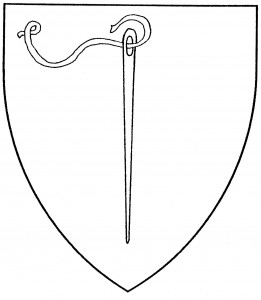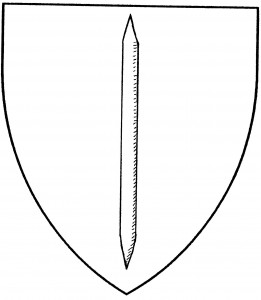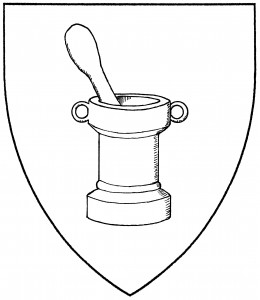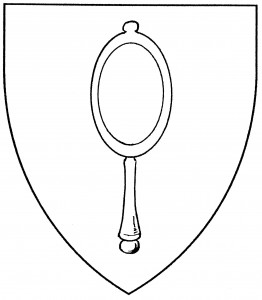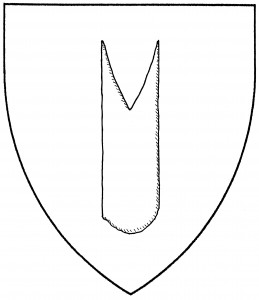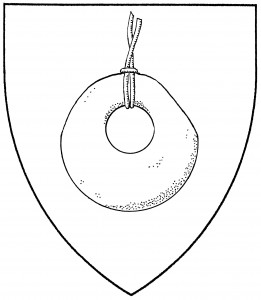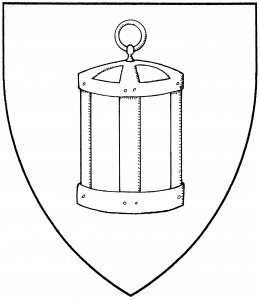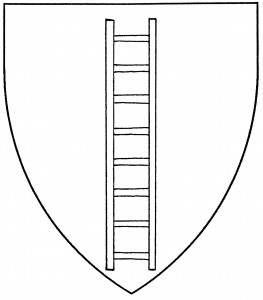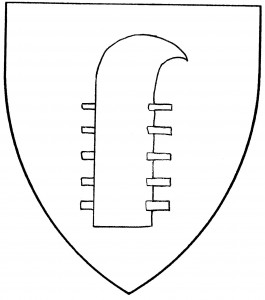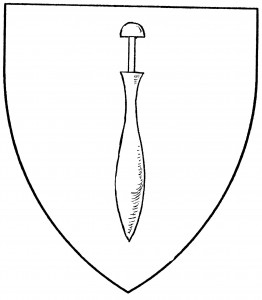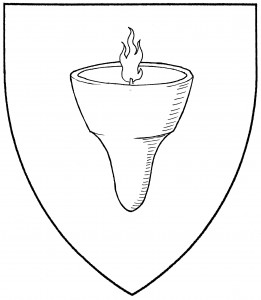
Lamp, lit (Period)
A lamp is a source of light, consisting of a container of oil with an emerging wick. The earliest form, dating from at least Roman times, was simply a shallow bowl bearing a wick; the most usual medieval form had a conical base, which could be held in the hand or mounted on a fixture. This is the default heraldic form of lamp, found in period armory in the arms of Wetewang, c.1410 [TJ 1555; see also Bedingfeld 90].
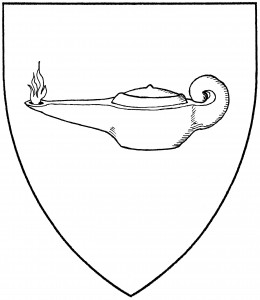
Arabian lamp, lit (Accepted)
However, the most commonly found lamp in Society armory is the “Arabian lamp”, with a handle at one end and the wick in a spout at the other; it’s also been blazoned a “Greek lamp”, though the shape is unchanged. It’s frequently drawn as the “Aladdin’s lamp” of modern imagery; we’ve no period examples of lamps in that form, neither as a charge nor as an artifact. However, a basic boat-shaped form of lamp was used in period, as terra cotta artifacts: the illustration is based on an 11th C. terra cotta lamp found in Sicily. Based on that example, the Arabian lamp is still permitted for Society use as of this writing. The Arabian lamp has its handle to sinister by default.
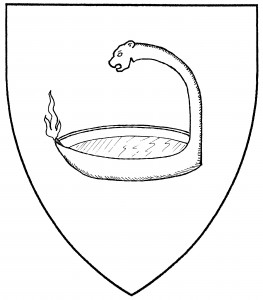
Hanging oil lamp, lit (Accepted)
Society armory also has the “hanging oil lamp”, with a shallow flat bowl of oil fastened to a vertical handle: the handle can be hung from a hook over a drawing table. Like the Arabian lamp, it isn’t found in period armory; however, the hanging oil lamp is a period artifact, as seen in the Opera of Bartoloneo Scappi, 1570, on which the illustration is based [Peter Thornton, The Italian Renaissance Interior, 1400-1600, plate 347; cf. also plates 23, 294]. Unlike the Arabian lamp, the hanging oil lamp doesn’t have a default orientation; it is left as an unblazoned detail. (There’s also one instance in Society armory blazoned simply an “oil lamp”, with no handles; it’s the exception.)
Any form of lamp, if blazoned “flammant” or “enflamed”, is shown with the wick lit. “Lit”, of course, works as well. The lamps in the illustrations are all lit.
For related charges, see candle, lantern, torch. See also pitcher.
The Royal University of Ithra bears: Gules, on a sun Or eclipsed gules, an Arabian lamp flammant Or.
The Order of the Golden Beacon, of the Barony of Ynys Fawr, bears: Per bend sinister azure and Or, a lamp argent enflamed Or.
Tiffanie du Claire bears: Purpure, a [square] oil lamp enflamed between three stars of David one and two Or.
Arthur Lemner of Wesley bears: Azure, in pale a drawing compass and a two-spouted oil lamp argent, enflamed Or.
Brigid Duncan bears: Per bend vert and gules, a bend between a hanging oil lamp argent lit Or and a boar sejant Or.
